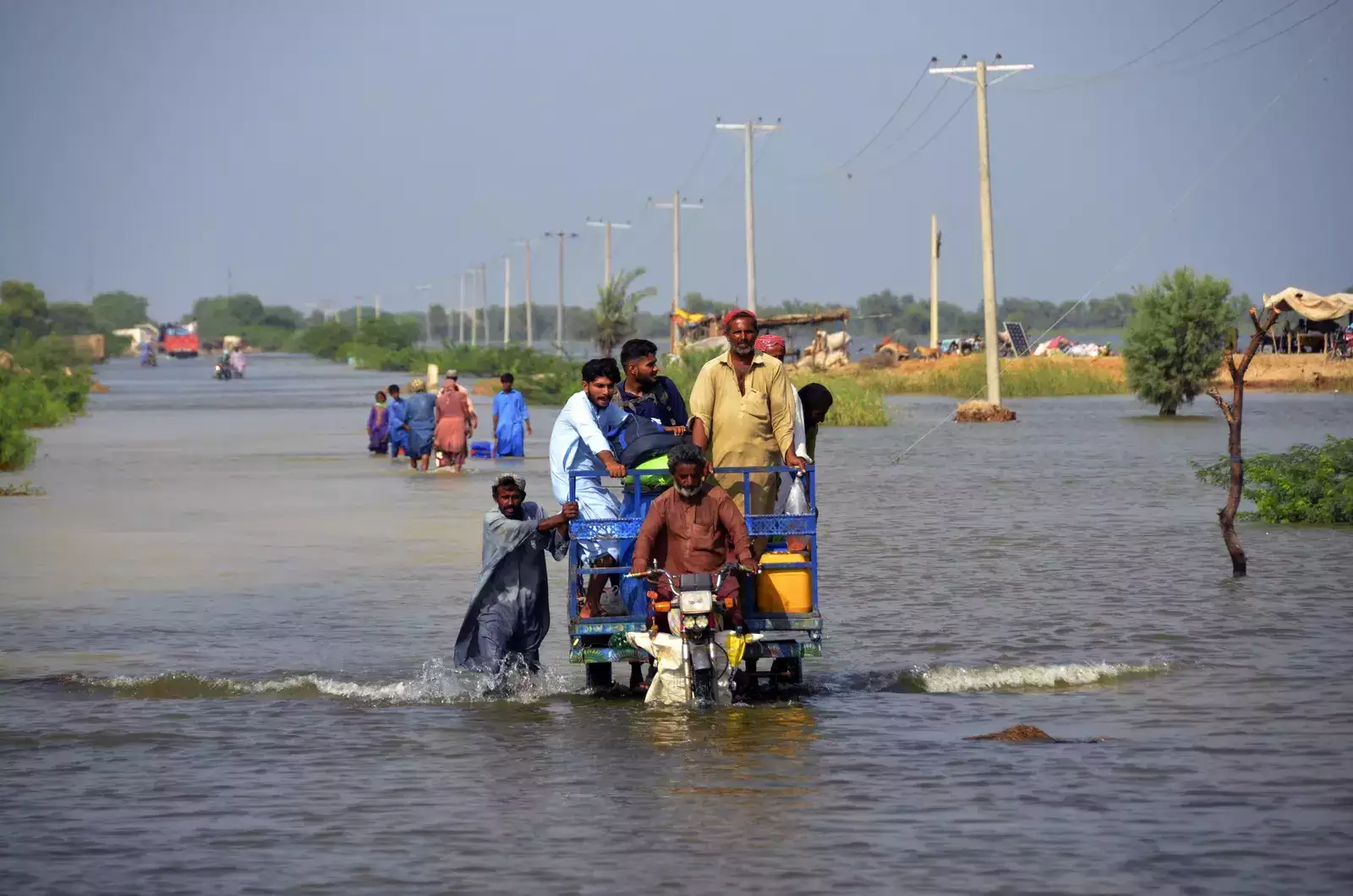By Malik Amin Aslam Khan, former Pakistan Minister for climate change and Professor Benito Müller, Convener international climate policy research, Environmental Change Institute, University of Oxford, UK
The figures rarely capture the fatality or the enormity of the tragedy. In Pakistan over 1700 people have been killed, 33 million displaced, and miles of roads and thousands of hospitals damaged or destroyed. The costs are still being counted in a country that saw this year’s monster monsoon season unleash devastating floods that washed away a third of the country.
Around 10 million children need immediate lifesaving assistance today, according to UNICEF. Farmers say they cannot find dry land to farm. It could take six months for floodwaters to recede. The country faces a looming food crisis after 1.5 million hectares of crops were damaged. The estimated cost of the damage runs to over $30 billion.
In another climate strike, the estimated damages from Hurricane Ian are $41billion at best and $67billion at worst. The 150mph winds that made landfall in Florida and South Carolina this September make Hurricane Ian one of the top five worst storms in US history.
Key West and Khyber Pakhtunkhwa or Sindh have little in common except vulnerability to climate change. However. While residents of both areas painfully suffer the impacts of climate and are forced to withstand the damages, at least the United States and other rich countries possess the resources and capacity to rebuild and rebound.
Nature’s fury, triggered by climate change, is now striking with increasing frequency and is hitting particularly the world’s most vulnerable nations, which also remain the most ill-equipped to handle the consequences. Pakistan is among the top 10 most vulnerable countries on the Climate Risk Index, even though it contributes less than 1% to global greenhouse gases.
Many countries that are hardly contributors to climate change are being struck by the most extreme climate impacts, and they should not be left high and dry to absorb the price for the ensuing loss and damage. We urgently need a new multilateral pilot fund to respond to such climate induced Loss and Damage. This fund should be focused on recovery, reconstruction, and rehabilitation after having suffered adverse climate impacts.
These rising climate impacts leave thousands of cities and towns facing staggering challenges to rebuild infrastructure and restore essential services. In Florida, around 10,000 people remain internally displaced; in Pakistan, this runs in the millions. Leaders must heed their genuine demands and help these most vulnerable displaced people to relocate their lives with dignity and rebuild critical infrastructure in a climate-compatible manner.
COP27 offers yet another opportunity for leaders to fill the gap in existing funding arrangements that are no longer adequate to meet the requirements of the most vulnerable countries. Glasgow gave momentum to Loss and Damage, Sharm El Sheikh must mobilize solidarity in action and delivery. The credibility of the whole system hinges on this at the moment.
In his remark made at COP26 last year, President Biden accepted that action and solidarity are required saying, “We have to stand together and hold each other accountable. The United States recognizes that we will meet our duty to support developing countries taking these actions because they’re going to need our help”. Actions now need to follow.
The grave situation in Pakistan today is the harshest of wake-up calls for the whole world. As heatwaves get more intense and storms grow stronger, the US and the world’s rich economies must step up and help the poorest and most vulnerable in dealing with the loss and damage they are suffering right now from climate change.





